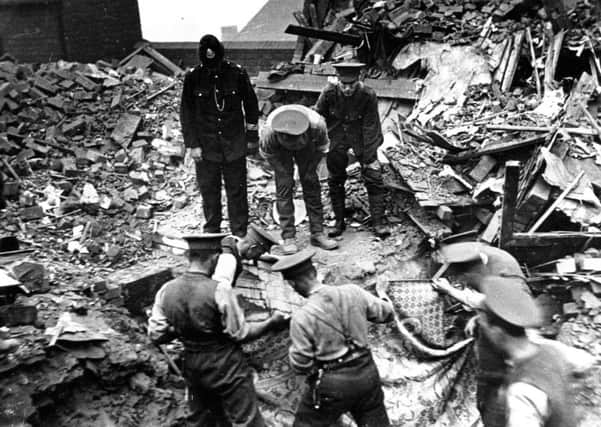Recalling the horror of the Zeppelin raids


FOR a nation that thought itself protected by the English Channel, raids by German airships brought “shockwaves of terror” to civilians, says Barnsley-based author Tim Lynch.
By 1918, airship raids on England had claimed over 500 lives and injured more than 1,000 people.
Advertisement
Hide AdAdvertisement
Hide Ad“In comparison to what was to come a generation later, the Zeppelin raids were little more than a nuisance, but for a nation that had believed itself to be protected by the English Channel and the might of the Royal Navy, the threat of being attacked in their own homes brought shockwaves through the population,” says Lynch, author of Yorkshire’s War.
“The merest hint of a Zeppelin raid brought production in factories to a halt as workers fled into the open countryside - although the German bombs fell more often into empty fields than onto real targets.”
The fear caused by airship attacks is revealed in vivid accounts given by Yorkshire civilians.
Reverend Joseph Prince, of Silkstone in Barnsley, was present on November 28 1916 when a “monster Zepp” appeared over the church.
Advertisement
Hide AdAdvertisement
Hide AdHe was woken by the rattling of windows in the vicarage and the “boom, boom of the bombs”.
“We were crouching in the vicarage garden and the Zepp was moving slowly and at a low altitude, and its two cars were quite visible to me. No words can express our sense of relief when the monster veered away.
“In the village the panic was universal and people sought shelter in the old disused day-holes and elsewhere.”
The Zeppelin, LZ61, later passed over Lowestoft where it was shot down by British fighters and crashed into the sea, with no survivors.
Advertisement
Hide AdAdvertisement
Hide AdIn a raid on Hull, schoolboy Walter Doughty recalled a near-miss as he got up at 2am to use the outside toilet.
Luckily his mother followed him into the garden just as a Zeppelin passed overhead.
“As I looked up, there was a light and this Zeppelin was coming up at a fast speed with quite a noisy engine. As I turned into my mother’s skirt she immediately understood what was happening. We dashed back through the double door and were thrown across the kitchen...when everything fell at the back of us. The bomb had landed about three or four yards yon side of the toilet in the garden.”
Children also found themselves involved in ‘war work’ of sorts.
Advertisement
Hide AdAdvertisement
Hide AdSchools set girls to work sewing sandbags or knitting socks for soldiers while campaigns were launched to encourage children to collect sphagnum moss for use in field dressings and conkers to produce acetone for munitions.
Boy Scouts helped guard important sites such railway tunnels and by 1916 were manning anti-aircraft guns.
The 1917 Sheffield Scout Yearbook records that nine boys signed on to work on the Parkwood anti-aircraft gun and searchlight.
They attended three drills a week and a shooting trial at Spurn Head in May that year.
Advertisement
Hide AdAdvertisement
Hide Ad“The scout team fired very successfully the rounds allocated to them and were specially commended by the inspecting officer,” the Yearbook notes.
Children raised money on Flag Days, while others earned money at Army camps.
Ernie Norwood, who was eight in 1917, recalled his work in the Holderness area.
“I was quite popular with the soldiers and started to sell them Sunday papers, also the workmen who lived in the huts, making myself some money in the process...I did not like the fact that when I got friendly with the soldiers they would go to France and I never heard from them again.”
* Yorkshire’s War is published by Amberley Publishing, priced £14.99